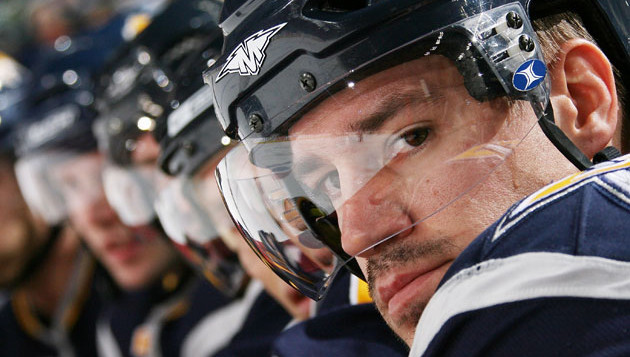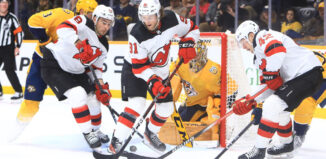New NHL Equipment Considerations
There has been a lot of recent discussion about making two major changes to NHLer’s equipment. One: mandatory visors. Two: smaller goalie pads. Like all big alterations, there are pros and cons to each side, so let’s break some of them down.
Mandatory Visors
After the Marc Staal incident on March 5, the talks about mandatory visors heated up. For those of you who haven’t seen this gruesome injury, the New York Rangers alternate captain took a puck to the eye in front of his own net. If he had been wearing a visor, chances are this injury would not have happened. Whenever these types of incidents happen, it’s definitely one more reason to consider mandating visors.
On the other hand, though, there are times where visors could actually be unsafe. One of the most significant is during fights. Naturally, you can’t have a fight with guys wearing visors, which would mean they would have to remove their helmets entirely. This makes the players’ heads vulnerable if they fall.
Another argument made against visors is that players are used to not wearing them. And that forcing them to start can mess with their vision. They’re used to seeing the game a certain way and putting anything in front of their eyes will take some adjusting. When put in perspective, though, it seems like an inadequate argument. If it’s a matter of getting used to a shield or risking your eyesight, it is a relatively easy decision.
About 73 percent of players currently wear visors voluntarily—so the change would not impact the majority of players. If they decide to grandfather the rule, it would also only affect the players coming into the league after it is implemented.
Verdict: Thumbs up on the visors. Save the eyes!
Smaller Goalie Pads
The second alteration that has been discussed is making the size of goalie pads smaller. The main change would be about two inches off the height of the pads. As of now, the pads are allowed to take up 55 percent of the goalie’s leg. Their aim is to try to find a lower percentage that still provides enough protection.
In short, the debate is between maintaining goalie safety and wanting more scoring in the game.
For the past 60 years the average number of goals scored in a game has fluctuated between 5 and 8. Quanthockey.com has a great graph showing the average number of goals scored since the very beginning. The size of goalie pads has been increasing throughout the years, which is most likely the reason for the slight decrease since the 80’s. Maybe it’s time to simply keep the pads at the size they are now. Stop increasing their size, and don’t begin to decrease them either.
While it’s true that goalies are getting bigger and, in turn, getting bigger pads, players are also getting more offensively skilled and finding more ways to score. Sure, the most common reason that non-hockey fans give for not watching the game is that there isn’t enough scoring. But why should we alter the rules of the game just to gain more fans? Especially if it puts the safety of our goalies at risk. Hockey isn’t about high scoring games. Everyone’s used to the game ending somewhere around 3-2, and for most true hockey fans this isn’t an issue and never will be.
Verdict: At least not yet. There are more important changes to worry about. (ie: realignment, iffy suspensions and non-suspensions, icing rules)
















[…] via Sports Xchange, Photo Credit: The Pink Puck […]